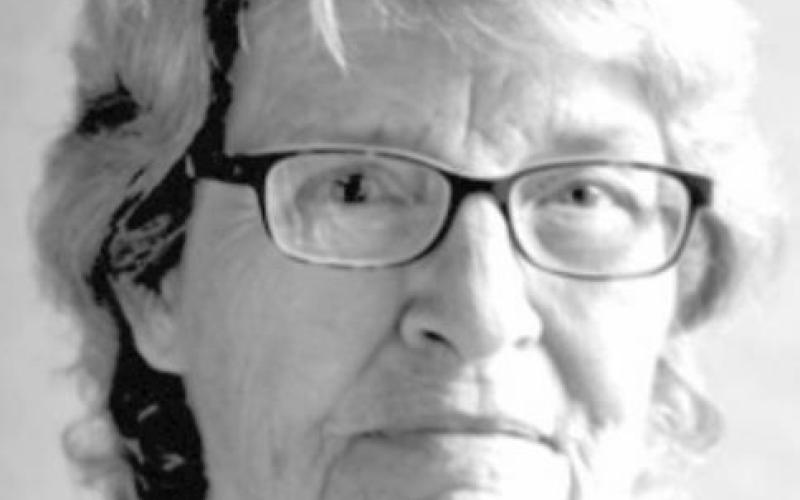Hill families and others settle in area
Other early pioneer families also had a lasting impact and influence on the community of Eliasville and the surrounding area of the two counties of Young and Stephens. The Hill family led by Thomas Hill and Amanda (Randall) Hill, who married in Alabama and arrived here in 1876, in a caravan of wagons bearing more settlers. Accompanying them were their two sons, George W. and Samuel H. Hill. They acquired land southwest of Eliasville, in Stephens County, along the Clear Fork of the Brazos River. They ranched and were friendly to the local Indians, most likely the Tonkawa.
George W. and Amanda Frances (Goodall) Hill had nine children and Sam and Harriet (Goodall) Hill had 10 children. The brothers married sisters, which often happened on the frontier and was common in the rural communities. The brother’s combined herd was about 1,000 head. George Hill’s brand was a double diamond and Sam’s was an H6. Later, Sam’s son, Loyd took over much of his cattle operation.
Also arriving in the caravan of wagons back in 1876, was John Roach, from Hunt County and before that, Alabama. He and his family settled about a mile south of Eliasville, in Stephens County, and was a stock farmer. John and Frances Isabel Roach had three children when they arrived and then had nine more while they settled in Stephens County. Most of them were well educated and had very successful careers. Many of them were musicians and added to the community where they settled. One of the youngest, Zula Roach, married Ben Ward, who worked for the Donnell brothers and adopted Eliasville as his home and eventually had a successful Real Estate Business in Newcastle, where he was active in the Methodist Church and community affairs. Ben Ward was an orphan boy from South Carolina and first arrived in Case County and then came to Eliasville, in Young County, by 1897, and became active in Eliasville reunions.
The family of John J. Daws arrived from Hood County in 1876 to establish a stock enterprise two miles north of Eliasville, in Young County. Later, his sons spread it on over into Throckmorton County, after the open range disappeared.
Capt. Joseph Benedict was another of those early pioneers who arrived a year later, in 1877. He and his wife, Adele Peters, and son, Harry, settled a few miles east of Eliasville. Capt. Benedict’s wife was the granddaughter of the famous Texas colonizer, W.S. Peters, of Peter’s Colony.
Wiley P. Jones and his family arrived in Eliasville by 1877, from Ellis County. He was an extremely versatile man who was a stock farmer, merchant and an early teacher in the community at the schoolhouse. Wiley P. Jones and Harriet Anderson (Gilmore) Jones married in Ellis County in 1866 and arrived on the Clear Fork by 1877. They settled two miles south of Eliasville, in Stephens County. He established a store as a merchant and raised cattle. Jones organized the first schooling in a hut on the Gus Long place, just south of town. Jones also was the first superintendent of the Sunday School organized in that same hut each Sunday. Among the first pupils were children from the area families of Donnell, Baldwin, Parrott, Hughes, Long, DeLong, Pratt and Hill.
Within a four year period, a dozen more families moved into that area and settled in and around Eliasville, which now accounted for more than 100 people.
The families represented four different religions: Church of Christ, Presbyterian, Methodist and Baptist. Among them were well-educated members who came from aristocratic families of the south and the cultural backgrounds with strong Christian beliefs. All that made Eliasville a strong Christian community from the very early settlements.
The members of the community organized and shared Sunday services and took turns leading the worship; this co-operation went on for 15 years before the Presbyterian Church first organized into their very own church, which was shared with the Methodists.
S.D. (Rock House) Davis arrived in 1878 and lived in the rock house on his land, located four miles west of Eliasville. He headed up a large stock farm of cattle and included a herd of sheep, and settled west of the Clear Fork.
Between 1880 and 1890, a contingent of new families arrived and they included: Akers, Applewhites, Hefners, Evans, Harris, Kirtley, Parrott, Richey, Parker, Salmon, Steward, Walker and Washburn.
Near the end of the 1880s, the open range grazing began to close and fencing began to appear and the stockmen were forced to fence in their own places and then seek extra grazing land by leasing additional pastures. Some fenced with rock walls, especially around the Eliasville area. One of these examples is the rock wall at the Eliasville Cemetery, which should be preserved for history.
By the 1890s, more families arrived in the area and included: Lacy, Ardis, Brighton, Cunningham, Dinsmore, Hammacks, Long, McCharen, McGlamery, Milam, Newell, Poindexter, Price, Redwine, Reeves, Rucker, Souter, Owen and more Clarks.
Stand by for more next week on some of these early families. Share stories of these early ancestors with Jean Hayworth at office@breckenridgeamerican.com.
- Log in to post comments


